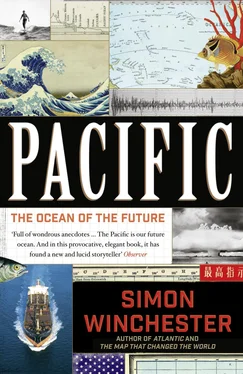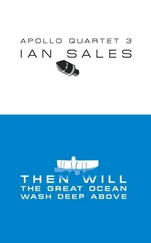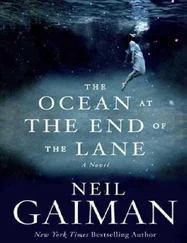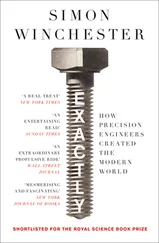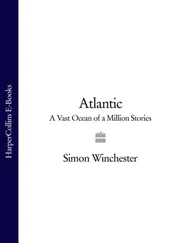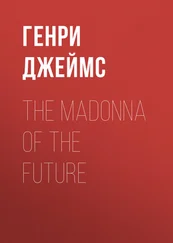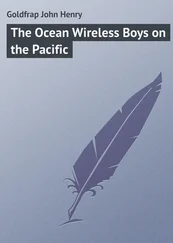Helicopter during the evacuation of Saigon
Hong Kong’s “retrocession”
Destruction by Cyclone Tracy in the city of Darwin
Typhoon Haiyan
Sir Gilbert Walker
Map of the Pacific—Physical
The El Niño Phenomenon
Gough Whitlam
Jørn Utzon
Alvin
The tectonic architecture of the Pacific Ocean
Black smokers
Inhabitants of Australia’s Great Barrier Reef
A Hawaiian feather cloak, an ahu’ula
The short-tailed, or Steller’s, albatross
“The Pacific Garbage Patch”
The eruption of Mount Pinatubo
The carrier USS Kitty Hawk and a Chinese Song-class diesel attack submarine
Map of the Western Pacific: U.S. and Chinese Military
The Nine-Dash Line
Chinese constructions in the South China Sea
The USNS Impeccable
Admiral Liu Huaqing
Andrew Marshall
Hokule‘a
PROLOGUE: THE LONELY SEA AND THE SKY CONTENTS Cover Title Page Praise for Pacific Copyright Dedication For Setsuko Epigraph Look East, where whole new thousands are! —ROBERT BROWNING, WARING List of Maps and Illustrations PROLOGUE: THE LONELY SEA AND THE SKY AUTHOR’S NOTE: ON CARBON Chapter 1 THE GREAT THERMONUCLEAR SEA Chapter 2 MR. IBUKA’S RADIO REVOLUTION Chapter 3 THE ECSTASIES OF WAVE RIDING Chapter 4 A DIRE AND DANGEROUS IRRITATION Chapter 5 FAREWELL, ALL MY FRIENDS AND FOES Chapter 6 ECHOES OF DISTANT THUNDER Chapter 7 HOW GOES THE LUCKY COUNTRY? Chapter 8 THE FIRES IN THE DEEP Chapter 9 A FRAGILE AND UNCERTAIN SEA Chapter 10 OF MASTERS AND COMMANDERS EPILOGUE: THE CALL OF THE RUNNING TIDE Note on Sources Bibliography Index Acknowledgments About the Author Also by Simon Winchester About the Publisher

Here from this mountain shore, headland beyond stormy headland plunging like dolphins through the blue sea-smoke
Into pale sea—look west at the hill of water: it is half the planet . . .
arched over to Asia, Australia and white Antarctica: those are the eyelids that never close; this is the staring unsleeping
Eye of the earth; and what it watches is not our wars.
—ROBINSON JEFFERS, FROM “THE EYE,” 1965
United Airlines Flight 154 leaves Honolulu International Airport just after dawn three times a week, bound ultimately for the city of Hagåtña, the capital of the island republic of Guam. If the northeast trades are blowing at their usual steady twelve knots, the jet will take off to the east, into the low morning sun over Waikiki, and those passengers on the aircraft’s left side will see the wall of skyscraper hotels along the beachfront and be able to glimpse down at Doris Duke’s great seaside mansion, Shangri-La. Once the plane is two miles high above the crater of the dormant Diamond Head volcano, it will begin to make a long and lazy turn to the right.
If the morning haze is light, passengers on the right side now can sometimes glimpse the bombers and heavy transport planes lined up on the flight line of Hickam Field, and maybe a flotilla of sleek gray warships will be gliding slowly through the lochs of Pearl Harbor. There will be some suburbs clustered between the shore and the slopes; there will be a skein of rush-hour traffic crawling along on H-1, the main thruway into Honolulu; and behind these urban images will rise ranges of mountains, razor-sharp aiguilles dotted in places with white radar domes.
With every one of its seats invariably filled, the plane will then clear its throat and tilt its nose ever higher, and once at five miles high, it will set its autopilot to a southwesterly course, heading out initially over two thousand miles of clear blue, unpeopled ocean. As the climb flattens out, and the aircraft passes through a final stratum of small puffballs of cloud, in a blink the island behind fades, is suddenly gone from view, and all below is just sea, endless empty sea, with many hours of emptiness ahead.
The ocean beneath is almost unimaginably vast, and illimitably various. It is the oldest of the world’s seas, the relic of the once all-encompassing Panthalassic Ocean that opened up seven hundred fifty million years ago. It is by far the world’s biggest body of water—all the continents could be contained within its borders, and there would be ample room to spare. It is the most biologically diverse, the most seismically active; it sports the planet’s greatest mountains and deepest trenches; its chemistry influences the world; and the planetary weather systems are born within its boundaries.
Most see this great body of sea only in parts—a beach here, an atoll there, a long expanse of deep water in between. Just a few, mariners mostly, have the good fortune to confront the ocean in its entirety—and by doing so, to win some understanding of the immense spectrum of happenings and behaviors and people and geographies and biologies that are to be found within and on the fringes of its sixty-four million square miles. For those who do, the experience can be profoundly humbling.
Captain Cook wrote that by exploring the Pacific he had gone “as far as I think it is possible for man to go.” To traverse it today, two and a half centuries later—to set a course from Kamchatka to Cape Horn, to pass between the Aleutians and Australia, to make a ten-thousand-mile crossing from Panama to Palawan—is to experience a sense of the frontier that is lacking almost everywhere else on the planet. And not simply for its immensity, but also for the pervasive sense, even today, of confrontation with the unknown and the unknowable. The British Admiralty’s revered chartroom bible, Ocean Passages for the World , still cautions sailors embarking on a crossing, “Very large areas of the Pacific Ocean are unsurveyed, or imperfectly so. In many areas no sounding at all has been recorded . . . the only safeguards are a good lookout, and careful sounding.”
United 154, operated most days by one of the more battered old planes from United’s Hawaiian stable, is known locally as the island hopper, makes its journey along almost six thousand miles, and takes some fourteen shuddering hours to do so. It skitters southwestward, then westward, then northward, stopping along the way at five places—all of them islands, scattered among three different countries—that are even less familiar to most than is Guam’s one city of Hagåtña.
UA154’s first stops, of half an hour or so, are on the flat atolls of Majuro and Kwajalein in the Republic of the Marshall Islands; it then does the same at runways that have been squeezed into the more dramatically mountainous and jungle-draped topographies of the islands of Kosrae, Pohnpei, and Chuuk, in the Federated States of Micronesia.
A scant few passengers travel all the way to Guam. There is much getting off and getting on, and luggage of daunting sizes and bewildering shapes is brought on and taken off at each stop. The crew members, leather-skinned old-timers who have some passing acquaintance with the local island languages, are obliged by United to make the entire journey. They will have recited their seat-belt and tray-table hymns no fewer than twelve times before final touchdown, and seem almost comatose with relief on their arrival in Guam.
In the popular European imagination, the Pacific Ocean contains many of the elements that are to be found along that six-thousand-mile passage between Honolulu and Hagåtña. In every stopping place, it is invariably warm, tropical; both the sea and the sky are intensely blue, the air is sweetly breezy, and there are white sands and coral reefs and sparkling fish of vivid colors darting between the anemone fronds. The roads are decked with bougainvillea and flamboyants and orchids and parrots, with papaya trees and palms of incredible profligacy that drip with dates and bananas and coconuts. Palm trees are central to Pacific imagery: they are to be seen leaning slightly off the vertical, under the endless press of the trade winds, and thereby offering a picture-perfect and theatrically green backdrop for every beach scene; a frame for other equally familiar images of curling waves and spume; or as a border to an empty ocean panorama with its distant gatherings of surfers waiting patiently for the rollers to break and the seas to begin to run.
Читать дальше
